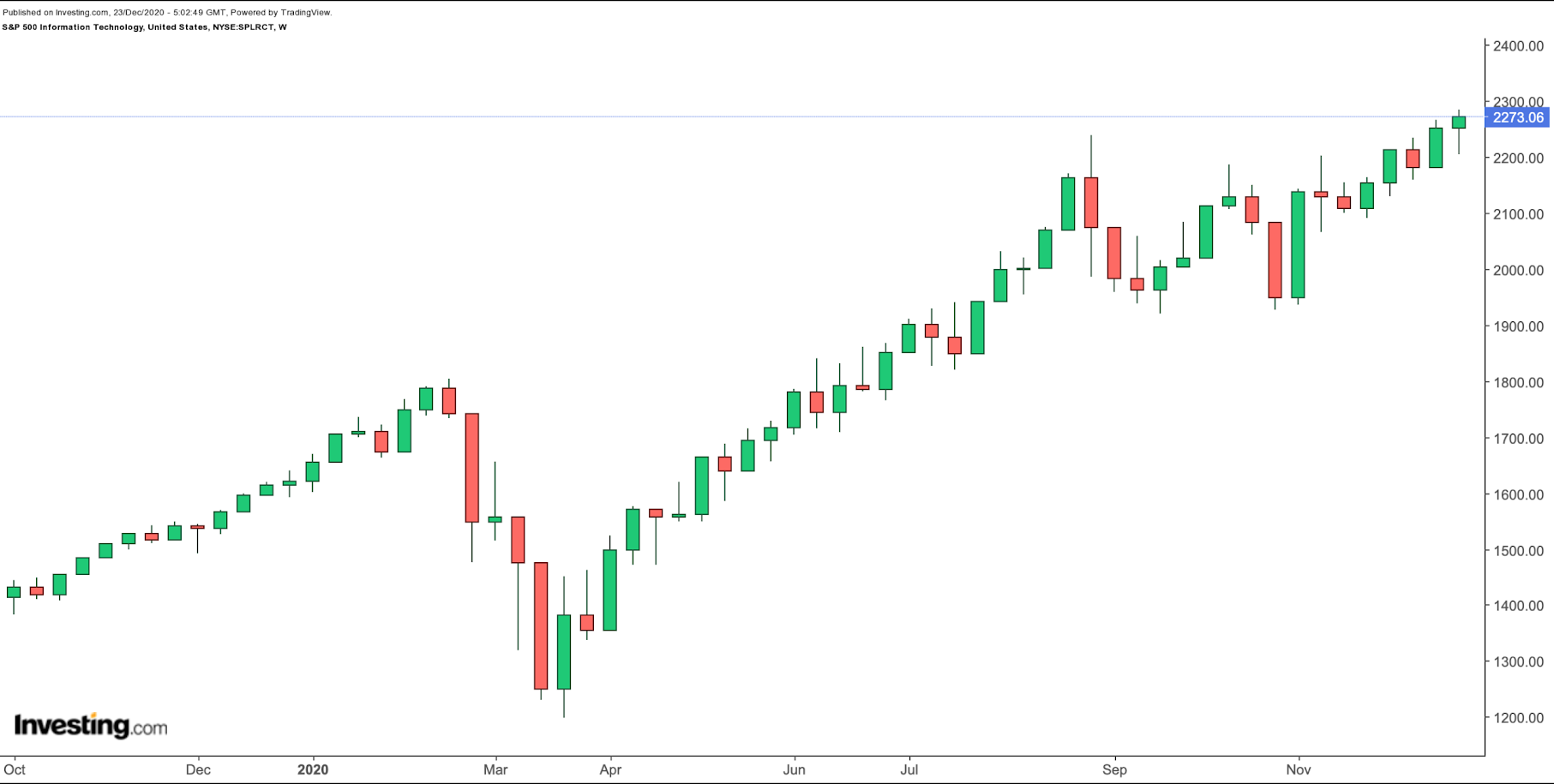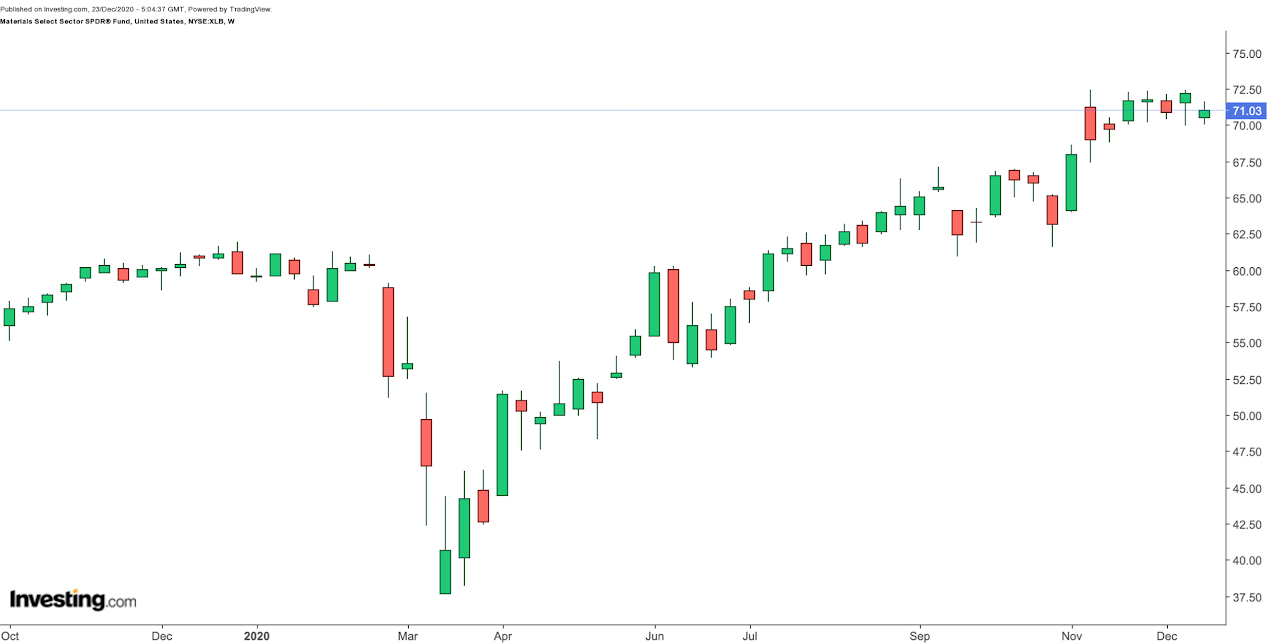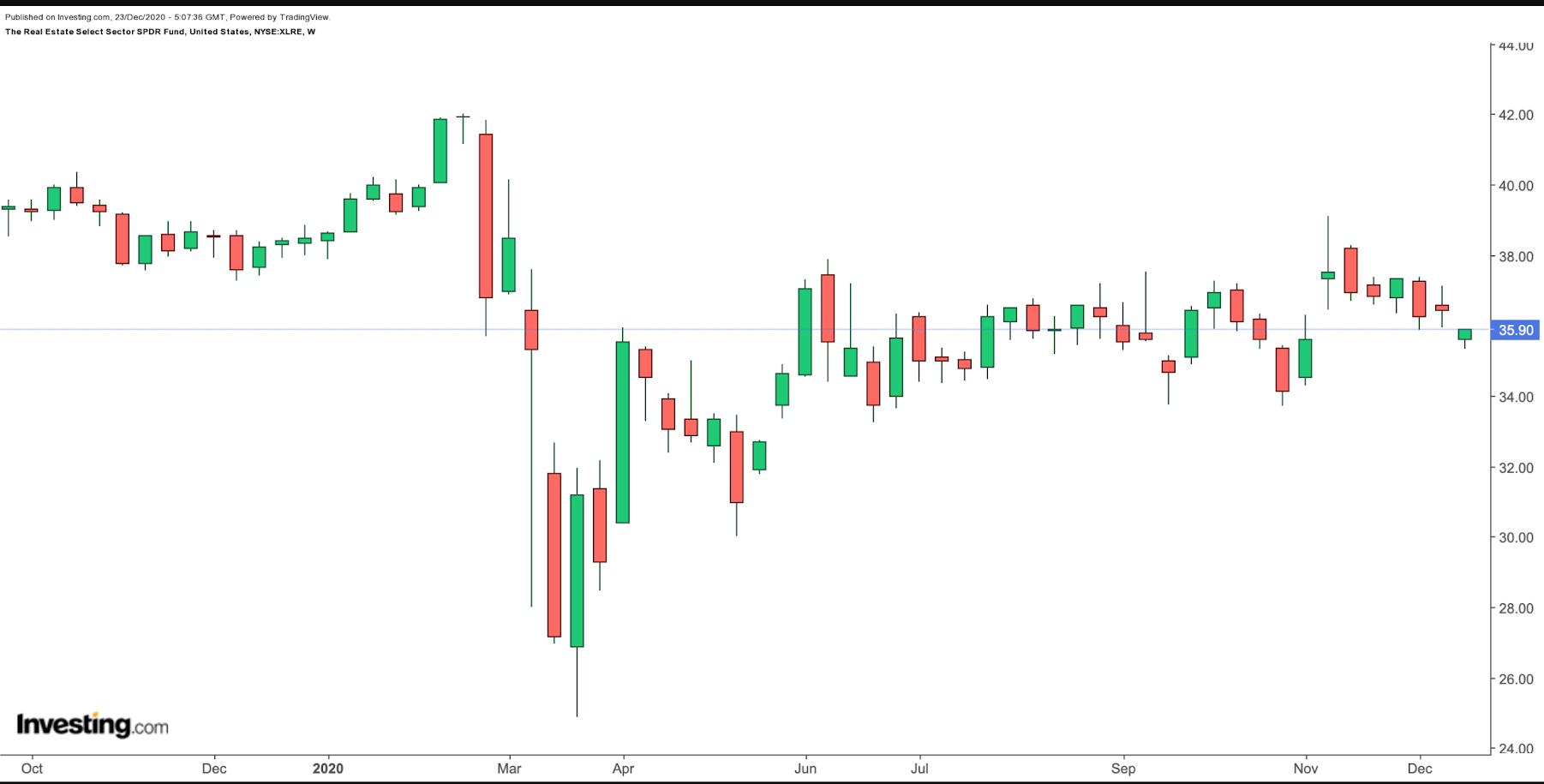In this three-part series, we've been taking a closer look at each of the 11 S&P 500 sectors and attractive ETFs with which to add exposure to each one.
Although the S&P 500 gave up some of its December gains recently, the index is still up around 14% year-to-date (YTD). Investing in specific sectors within the S&P can allow for more targeted asset allocation.
In the first post}} of the series, we looked at Communication Services, Consumer Staples and Consumer Discretionary. In the second we covered Energy, Financials, Health Care and Industrials.
Today's final post will address the ETFs to consider for four remaining sectors: Information Technology, Materials, Real Estate and Utilities:
8. Information Technology (IT)
Since the beginning of the year, the {{962700|S&P 500 Information Technology index is up about 40%. This important sector comprises Software and Services, Technology Hardware and Equipment, and Semiconductors and Semiconductor Equipment.

Therefore, the number of exchange-traded funds that could be of interest to investors is also large. They include:
- SPDR® S&P Semiconductor ETF (NYSE:XSD) — up 57% YTD (covered here)
- SPDR® S&P Software & Services ETF (NYSE:XSW) — up 51% YTD (covered here)
- Technology Select Sector SPDR® Fund (NYSE:XLK) — up 40% YTD (covered here)
- Vanguard Information Technology Index Fund ETF Shares (NYSE:VGT) — up 43% YTD
- Fidelity® MSCI Information Technology Index ETF (NYSE:FTEC) — up 43% YTD
- iShares PHLX Semiconductor ETF (NASDAQ:SOXX) — up 49% YTD (covered here)
- iShares U.S. Technology ETF (NYSE:IYW) — up 46% YTD
- Invesco QQQ Trust (NASDAQ:QQQ) — up 45% YTD
- Invesco NASDAQ Next Gen 100 ETF (NASDAQ:QQQJ) — up 19% since Oct. 13, 2020 (covered here).
Since early spring, shares of most technology companies have rallied to reach all-time highs. ETFs enable investors to buy into a diverse range of leaders in the sector with added protection. In the coming weeks, we plan to cover or re-visit many of these funds.
9. Materials
The Materials sector primarily includes commodity-related manufacturing businesses. To invest in firms in the chemical, construction, material, packaging, mining and paper industries, consider the Materials Select Sector SPDR® Fund (NYSE:XLB). The fund started trading in December 1998 and has more than $5 billion under management.

XLB, which tracks the Materials Select Sector Index, has 28 holdings. More than 65% of the assets are in the top 10 names in the fund.
Among the leading names: industrial gas and chemical firms Linde (NYSE:LIN) and Air Products and Chemicals (NYSE:APD); paint giant Sherwin Williams (NYSE:WMB); cleaning and sanitizing firm Ecolab (NYSE:ECL); DuPont de Nemours (NYSE:DD), which concentrates on specialty materials, chemicals, and agricultural products; Newmont Corporation (NYSE:NEM), the largest gold mining company based on market capitalization.
Since the start of the year, XLB is up more than 16% and hit a record high in early November. Its current price supports a dividend yield of 1.74%. Trailing P/E andP/B ratios are 26.94 and 3.09, respectively.
The sector's strength in 2020 is, in part, due to sustained gold prices. Many analysts believe that the current record-low interest rates and stimulus programs aiming to support economic recovery will likely continue to support the share price of firms in the Materials sector. Two other ETFs that should be on your radar: Vanguard Materials Index Fund ETF Shares (NYSE:VAW) and the Invesco S&P 500® Equal Weight Materials ETF (NYSE:RTM).
10. Real Estate
The next sector focuses on a wide range of real estate management and development companies as well as equity real estate investment trusts (REITs), but excludes Mortgage REITs. The Real Estate Select Sector SPDR Fund (NYSE:XLRE), which we covered previously}}, provides exposure to the sector.

Although residential real estate is booming, the commercially-focused real estate sector underperformed in 2020. Therefore, due diligence on a given fund's sub-sector concentration is required to appreciate. So far in the year, XLRE is down about 8%. Its dividend yield stands at 3.2%.
Three other Real Estate ETFs worth considering: Vanguard Real Estate Index Fund ETF Shares (NYSE:VNQ), the iShares Residential and Multisector Real Estate ETF (NYSE:REZ) and the Schwab U.S. REIT ETF™ (NYSE:SCHH).
11. Utilities
The Utilities sector is composed of electric, gas and water utilities firms, as well as independent power producers and energy traders. The Utilities Select Sector SPDR® Fund (NYSE:XLU) offers access to firms in the Utilities Select Sector Index.

YTD, the fund has fallen by more than 5% and the current price supports a dividend yield of 3.2%.
Because of increased risk appetite since April, Utilities stocks have not performed well. Many names in the ETF have also faced competition from renewable energy companies.
Can 2021 bring full economic recovery? We cannot answer that question with certainty, but those looking for defensive plays in the new year can check out two other funds in the sector: the Vanguard Utilities Index Fund ETF Shares (NYSE:VPU) and the Invesco S&P 500® Equal Weight Utilities ETF (NYSE:RYU).
Editor's note: Read parts one and two here and {{art-200548584||here.
